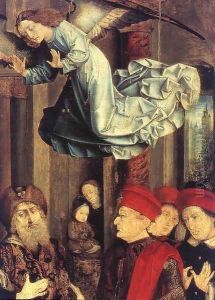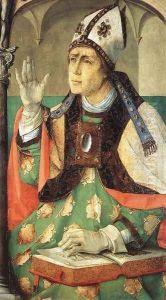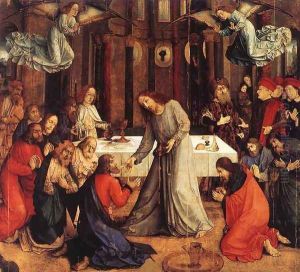Joos Van Wassenhove Paintings
Joos Van Wassenhove, also known as Justus of Ghent and Jodocus of Ghent, was a Flemish painter active during the Renaissance period. His exact birth date is not known, but he is believed to have been born around 1410 to 1415 in or near Ghent, which was then part of the County of Flanders (now in modern-day Belgium). Little is known about his early life and training, but it is evident from his works that he was a painter with considerable skill and an understanding of the contemporary artistic trends of his time, including the influences of Italian Renaissance.
Joos Van Wassenhove's career can be divided into two main periods: his time in Flanders and his subsequent work in Italy. In Flanders, he was associated with the city of Ghent, where he became a master in the Guild of St. Luke by 1460. His Flemish period is marked by works that showcase the detailed realism and complex iconography characteristic of Northern Renaissance art. However, it was his move to Italy that significantly marked his career and contributed to the spread of Renaissance ideas across Europe.
By 1473, Van Wassenhove had moved to Urbino, Italy, where he became part of the vibrant court of Duke Federico da Montefeltro, one of the most enlightened patrons of the arts in the Renaissance. In Urbino, Joos was commissioned to paint what is considered his masterpiece, the 'Communion of the Apostles', which was executed for the duke's private chapel. This work displays his ability to incorporate the Italian influence into his Northern artistic heritage, blending a meticulous attention to detail with a more harmonious and proportioned composition typical of Italian Renaissance art.
Throughout his career in Italy, Van Wassenhove also engaged in the production of portraits and possibly in the design of tapestries, although much of this work has not survived or has been difficult to conclusively attribute to him. His influence was not limited to painting alone; he was also involved in the intellectual circles of his time, contributing to the exchange of ideas between the North and Italy, which was a hallmark of the Renaissance.
The exact date of Joos Van Wassenhove's death is as uncertain as that of his birth, but it is presumed he died around 1480, most likely in Italy. Despite the limited number of surviving works definitively attributed to him, Van Wassenhove's contributions to the art of the Renaissance remain significant. His work exemplifies the fusion of Northern and Italian Renaissance styles, marking him as a key figure in the international spread of Renaissance art and ideas.


